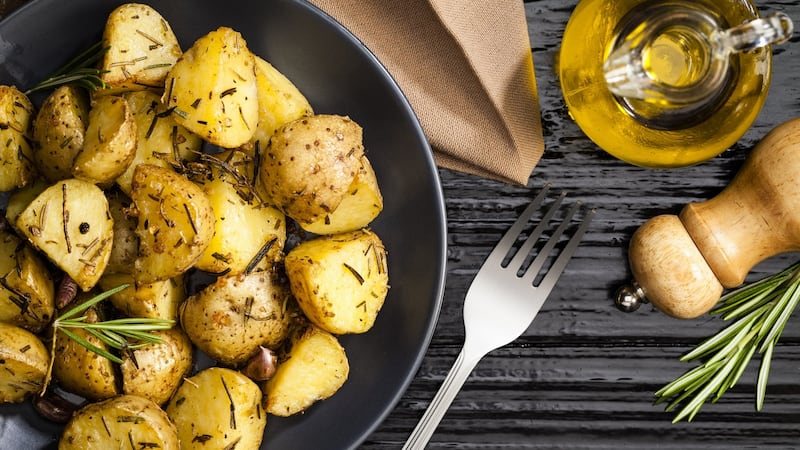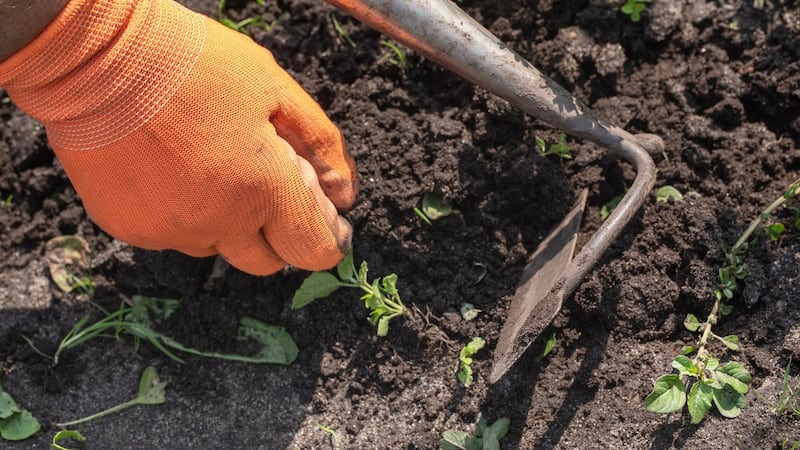In a world where all is changed utterly, it’s the small things that matter. A good night’s sleep, for example, or a smile from a stranger. Birdsong. Log smoke. Pretty much every episode of Call My Agent. Crisp sandwiches. Candlelight. The smell of freshly dug soil. Chocolate. Tomato seedlings. Reruns of old movies. Billie Holiday songs. The first fragile primroses. And, of course, the pleasure that comes from using herbs plucked box-fresh from the garden or allotment.
Grow your own culinary herbs and you’ll find yourself using them in ways that you never would if they were shop-bought; lavishly, unsparingly, adding fat handfuls to hearty winter soups, curries and stews or to give punchy flavours to homemade sauces, salads, puddings, pies and marinades. You’ll also cook differently, in a way where it’s no longer about the kinds of herbs that may or may not be in stock in your local supermarket but instead about the kinds that are in season in your garden.
This could be something as simple but as game-changing as a few sprigs of homegrown rosemary, its aromatic, grey-green needles sticky with resin, sprinkled onto roast potatoes. Or a freshly picked bunch of felty, purple sage leaves, gently fried in olive oil and butter, to nibble as a snack. Or a fistful of Moroccan mint leaves to make your very own mint tea and mojitos.
Whatever the herb ( and there are many, many different kinds), by growing them in your garden or allotment you’re giving yourself almost unlimited access to fresh, intensely flavoursome, impressively nutritious, health-boosting, organically-grown, seasonal garden produce that has the power to transform the simplest dish. Add to this the pleasure and pride that comes from growing some of your own food and it’s hard to fathom why anyone wouldn’t want to give it a go.
I say “garden” but in fact one of the truly brilliant things about growing herbs is that you really don’t need a garden; many (but not all) kinds will do very well in a pot, tub or window-box outdoors, just so long as you give them the kinds of growing conditions that they enjoy.

Heat-loving herbs
Heat-loving, drought-tolerant types of culinary herbs suitable for container-growing in this way include thyme (Thymus vulgaris), and prostrate varieties of rosemary (Rosmarinus officanilis ‘Prostratus’), both of which need a sunny, sheltered spot and the very sharp drainage of a compost amended with generous handfuls of horticultural grit. Other sun-lovers such as French tarragon (Artemisia dranunculus), dill (Anethum graveolens), winter savory (Satureja montana), summer savory (Satureja hortensis) and hyssop (Hyssopus officinalis) also like a compost that’s very free-draining but not one that’s ever allowed to dry out completely.
While nearly all of the above are perennial (the exceptions are summer savory and dill), some – for example, hyssop, tarragon and winter savory – are classed as half-hardy or frost-hardy, meaning they’ll require some sort of protection in cold winters if they’re to survive.
Basil (Ocimum basilicum), by comparison, is a very short-lived, heat-loving annual herb that so loathes any kind of wet, cool growing conditions that even the sunniest, most sheltered spot outdoors in this country is unlikely to make it happy. Instead grow this tender Mediterranean native indoors in a pot on a bright, sunny windowsill, or under cover of a warm, bright, draught-free porch, conservatory, glasshouse or polytunnel, and in a moderately rich, moist but free-draining compost, making sure to water only in the morning.
Not all herbs demand these kinds of bright, sheltered conditions. Examples of culinary types suitable for container-growing in shadier, cooler growing conditions outdoors in a soil/ compost that’s never allowed to completely dry out include mint (if you only have space for one kind , then grow the ultra-versatile, flavoursome and productive Moroccan mint, properly known as Mentha crispa ‘Moroccan’), chervil (Anthriscus cerefolium), chives (Allium schoenoprasum), parsley (Petroselinum crispum), and coriander (Coriandrum sativum). But it’s also worth noting that many of these are also quite happy growing in full sun as long as (and this bit is crucial) they’re kept well-watered.
These kinds of growing conditions also suit culinary sage (the perennial sub-shrub properly known as Salvia officinalis); bay (Laurus nobilis, the frost-hardy, evergreen shrub often grown as a clipped standard or ‘lollipop’ tree) and horse radish (Amoracia rusticana, make sure to give this deep-rooted perennial a deep container).
Other herbs are surprisingly easygoing. An example is pot marjoram (Origanum onites) which will grow in sun or light shade and – although it’s drought-tolerant – will also grow happily in a damp soil/compost as long as it’s free-draining.
Propagation
How to propagate your own? Like all plants, herbs can be loosely grouped into different categories. Examples of short-lived hardy annuals and/or biennials that can be raised from seed sown into pots under cover at this time of year include parsley; chervil (this needs light to germinate so surface-sow the seed); caraway (Carum carvi); saltwort (Salsola komarovii); shiso (Perilla frutescens); coriander and dill.
Many of of these are deep-rooted species that dislike root disturbance so are best sown directly into their permanent pots for hardening off and then moving outdoors in late spring. A tender annual, basil also dislikes being transplanted and is best raised from seed direct-sown under cover from early spring to late summer (sow with heat (21 degrees) into compost-filled trays or modules indoors, aiming for a spacing of 10cm-20cm between plants).
For a steady and generous supply of fresh leaves throughout the growing season, it’s a good idea to succession-sow many of these short-lived, fast-growing types of herbs at fortnightly intervals.
By comparison, perennial or shrubby herbs are much longer-lived but are typically far trickier to successfully raise from seed so instead are usually best sourced as young, pot-raised plants. Alternatively, they can be raised from cuttings taken during the growing season.
Be warned that young herb plants seen for sale in garden centres and supermarkets at this time of year have often come straight from the protective cover of commercial polytunnels or glasshouses, leaving their soft growth vulnerable to cool spring temperatures and less-than -ideal growing conditions. So make sure that they’re properly ‘hardened off’ (gradually acclimatised to outdoor growing conditions) before planting them into their permanent positions.
Last but not least, early spring is also an excellent time of the year to divide, and either pot or transplant large established clumps of many kinds of perennial herbs such as lovage (Levisticum officinale), sweet woodruff (Galium odoratum), sweet marjoram (Origanum majorana), oregano (Origanum vulgare), fennel (Foeniculum vulgare), thyme, chives and mint.
If you end up with a surfeit of young herb plants, you can always share the love by giving some away to friends and family. Tell them it’s all about the small things. They’ll know exactly what you mean.

This Week in the Garden:
Get ready for the start of another sowing season by checking stocks of seed, compost, trays, pots, labels, and horticultural fleece. If you’re finding it difficult to source certain items, try trading with gardening friends, many of whom will be happy to swap or share hard-to-get items.
Watch out for the first flush of young weed seedlings in the coming weeks. Use a hoe (pick a dry day) to slice these away and then cover bare soil and empty beds with an organic mulch or a temporary cover of plastic sheeting until you’re ready to use them to prevent further germination.















